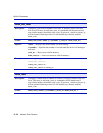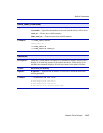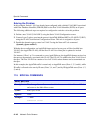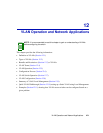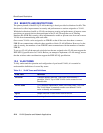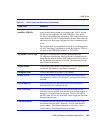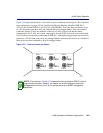
Types of VLANs
VLAN Operation and Network Applications 12-3
In this example, the Sales and Finance workstations have been placed on two separate VLANs. In
a plain Ethernet environment, the entire network is a broadcast domain, and the SmartSwitches
follow the IEEE 802.1D bridging specification to send data between stations. A broadcast or
multicast transmission from a Sales workstation in Building One would propagate to all the switch
ports on SmartSwitch A, cross the high speed link to SmartSwitch B, and then propagated out all
switch ports on SmartSwitch B. The SmartSwitches treat each port as being equivalent to any other
port, and have no understanding of the departmental memberships of each workstation.
In a VLAN environment, each SmartSwitch understands that certain individual ports or frames are
members of separate workgroups. In this environment, a broadcast or multicast data transmission
from one of the Sales stations in Building One would reach SmartSwitch A, be sent to the ports
connected to other local members of the Sales VLAN, cross the high speed link to SmartSwitch B,
and then be sent to any other ports and workstations on SmartSwitch B that are members of the
Sales VLAN.
12.2 TYPES OF VLANs
There are a number of different strategies for creating Virtual Local Area Networks, each with
their own approaches to defining a station’s membership in a particular VLAN.
12.2.1 802.1Q VLANs
An 802.1Q VLAN switch determines the VLAN membership of a data frame by its Tag Header,
described later in this chapter. If the frame received is not tagged, the switch classifies the frame
into the VLAN that is assigned as the default VLAN of the switch.
Some or all ports on the switch may be configured to operate as GARP VLAN Registration
Protocol (GVRP) ports. If a frame received is tagged, the frame is forwarded to the GVRP ports
that are configured to transmit frames associated with the frame VLAN ID and protocol. If the
received frame is not tagged, the frame is examined and tagged as belonging to the default VLAN.
Then the frame is forwarded to the GVRP ports that are configured to transmit frames associated
with the default VLAN and the frame protocol.
12.2.2 Other VLAN Strategies
VLANs may also be created by a variety of addressing schemes, including the recognition of
groups of MAC addresses or types of traffic. One of the best-known VLAN-like schemes is the use
of IP Subnets to divide networks into smaller subnetworks.




